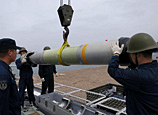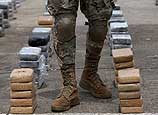
WASHINGTON, May 29 (Xinhua) -- Economic data and job creation figures are volatile, so it is difficult for the Federal Reserve to achieve the objective of calibrating its ongoing asset purchases on the back of incoming information, two experts from U. S. think tank Council on Foreign Relations (CFR) said Wednesday.
"The Fed is trying to have its cake and eat it too," Benn Steil, CFR director of international economics and CFR analyst Dinah Walker, wrote in a blog article released Wednesday.
In their views, having earlier tried to anchor market expectations of future low interest rates by pledging that policy would remain accommodative into 2015, Fed Chairman Ben Bernanke is now saying that the Fed will consider a recalibration of the pace of its asset purchases in light of incoming information.
Incoming information has been "extremely volatile" throughout this economic recovery. Using the six-month average of employment gains to project the unemployment rate going forward suggests vastly different metrics of how close the Fed is to achieving its 6.5 percent unemployment-rate objective, the two experts wrote.
If the average pace of job gains in the six months leading up to and including the March unemployment report had been extrapolated forward, the Fed would have expected to reach its 6.5 percent unemployment target in August 2015. Yet with just one additional month of employment data, an extrapolation of the six- month average gain in employment through April shows the unemployment rate falling below the Fed's 6.5 percent threshold in August 2014, a full year earlier, they contended.
Asset purchases are not a precision tool, so the idea of continuously recalibrating them to volatile economic data is a particularly bad one. "Recalibration is a strategy in need of recalibration," they said.
Since the onset of the financial crisis, the Fed has completed two rounds of quantitative easing programs, known as QE1 and QE2, buying more than 2 trillion U.S. dollars of Treasury securities and mortgage-backed securities. The Fed is buying these assets at 85 billion dollars per month, during the ongoing QE3, until the current 7.5 percent unemployment rate falls below 6.5 percent.
















 Modern movie dream in retro Mingguo street
Modern movie dream in retro Mingguo street


![]()
